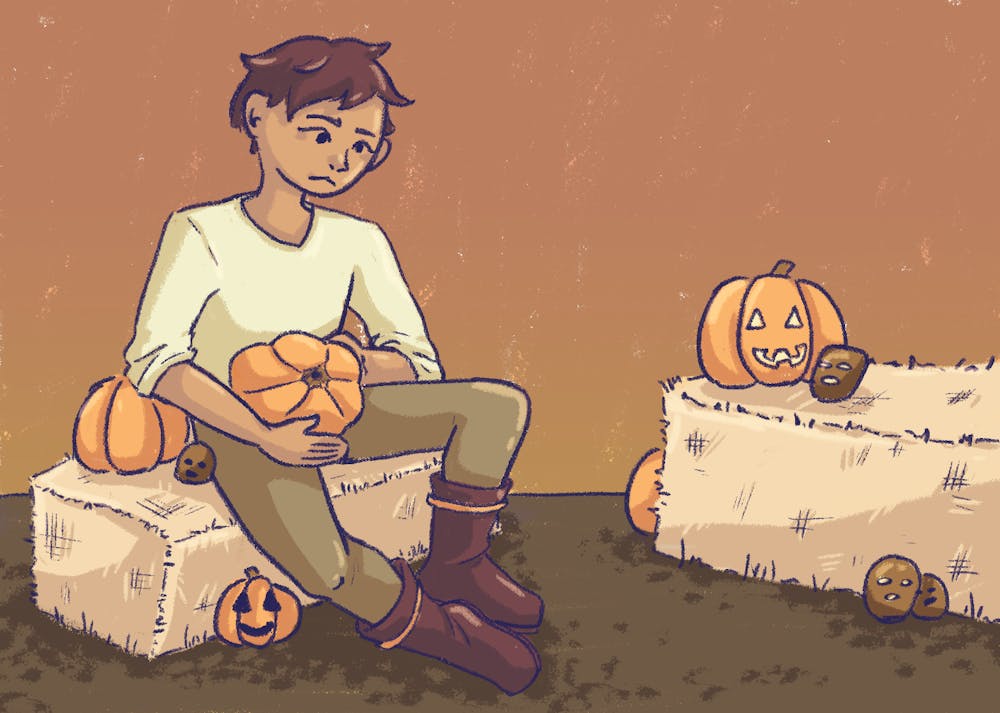Scary-looking pumpkins, mysterious ghosts, blood-sucking vampires and costumed trick-or-treaters are ubiquitous signs of the spookiest holiday of the year.
Whether you are haunting graveyards, summoning the dead or even just having a fun costume party with friends, here is some fun history about why we celebrate Halloween the way we do.
Pagan origins
The Gaelic festival Samhain (pronounced Sah-win) is the common pagan holiday said to be associated with Halloween.
This time of year signifies the transition between summer and winter. During this time, the veil between the spiritual world and the physical world is said to be the thinnest.
Blake Hartung, an instructor in the School of Historical, Philosophical and Religious Studies, describes this time as "a moment of ritual transition between light and darkness."
Viva Garrison, linguistics alumna and president of ASU’s Pagan Student Alliance, said while she feels the shifting energy with the season, she uses this time of year to "(obey) the cycle of light" and celebrate the "natural cycle of life."
Those who celebrate Samhain would expect supernatural visitors from the spirit world, and sometimes those would come in the form of late family members or the "Aos Si", a spirit most comparable to fairies.
Over time, both the pagan and Christian connection to the spirits evolved into how most people associate goblins, ghosts and other scary creatures with the holiday, Hartung said.
Christian Origins
Some may choose not to celebrate Halloween due to the spine-chilling frights that may occur during this sinister time of year.
Others may even refer to it as evil celebrations for "the devil's birthday," but make no mistake — this holiday has no connection to Satan.
Contemporary Halloween actually has its strongest roots in the Catholic holiday of Hallowtide, a three-day festival meant to honor the dead.
The first day, which occurs on Oct. 31, is dedicated to All Hallows' Eve, or its more recognizable contraction Hallowe’en.
All Hallows' Day, also known as All Saints' Day, meant to honor the saints, is celebrated on the second day, Nov. 1.
The last holiday in this series is known as All Souls Day, which is celebrated on Nov. 2. This celebration shares similar traits to its Mexican counterpart Día de los Muertos.
While describing the purpose of celebrating those who have passed, religious studies professor Tracy Fessenden said "keeping the signs of the dead around is not macabre," rather that "it’s nurturing a relationship with people who have gone before us."
Contemporary Halloween
The origins of Halloween are not as frightening as one may find in a horror movie, but still carry the spooky appeal due to their focus on the dead and unknown.
"The origins of Halloween are a little bit of syncretism," Hartung said, adding that it primarily is a mix between Christian and pagan rituals.
Trick-or-treating, for example, comes from the Christian practice of "souling," where primitive forms of trick-or-treaters would exchange soul cakes for prayers.
Meanwhile, during Samhain, people would dress up as ghoulish creatures and go door-to-door performing tricks in exchange for food.
As Halloween celebrations moved to America throughout the 20th century, traditions became more commercialized and less religious, Hartung said.
Turnip jack-o'-lanterns were traded for pumpkins, and soul cakes were traded for candy.
As the holiday became much more light-hearted in spirit, it slowly grew closer to what we might recognize today as Halloween.
Reach the reporter at sbalas44@asu.edu and follow @sophiabala1101 on Twitter.
Like The State Press on Facebook and follow @statepress on Twitter.
Continue supporting student journalism and donate to The State Press today.

Sophia Balasubramanian currently serves as the Diversity Officer for the State Press. She previously worked on the Echo as an editor and reporter.




